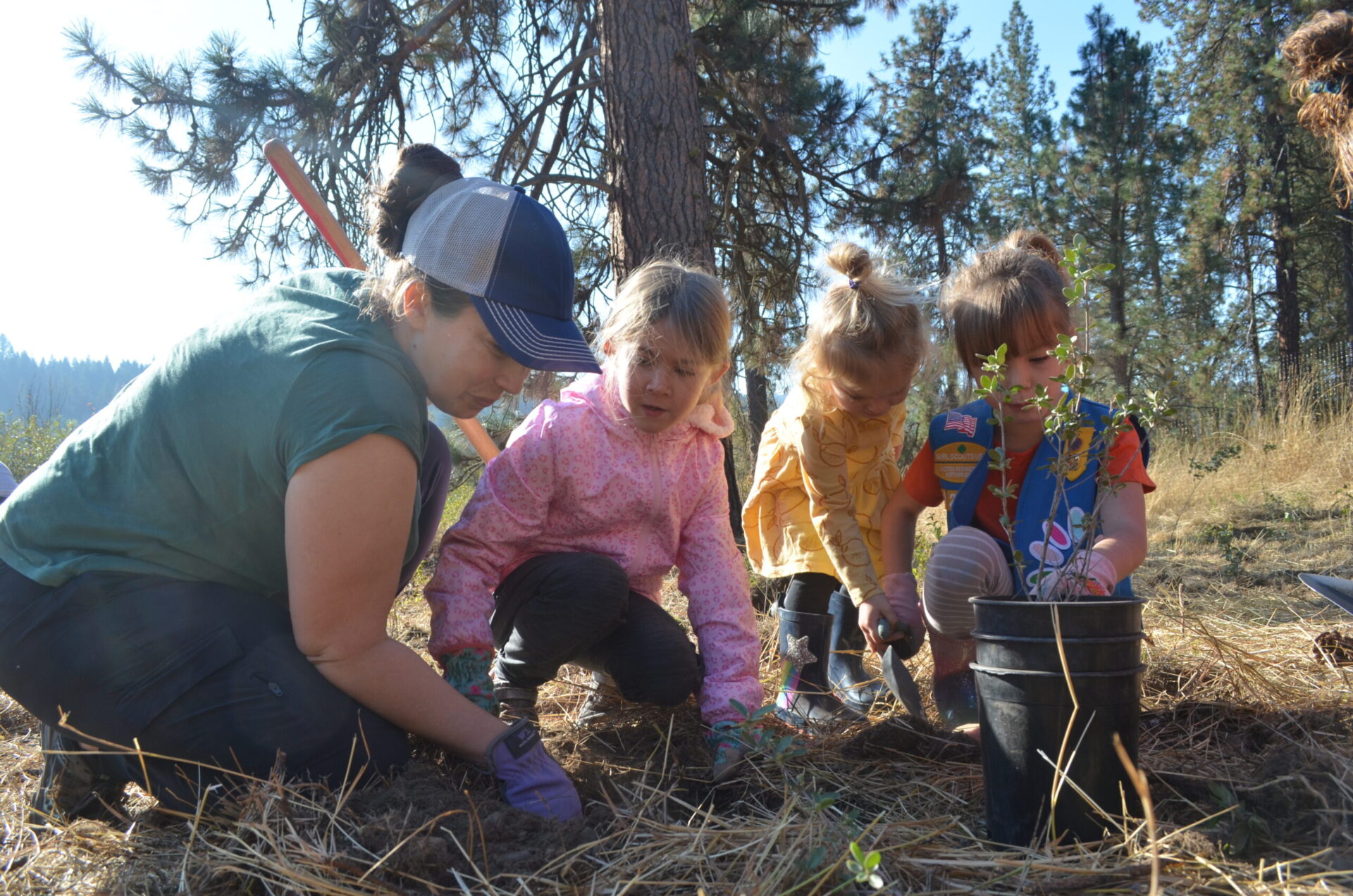How do we fit?
The first humans to leave their fingerprints on the springs of Waikiki (native Hawaiian for “spouting water”) were the Spokane Tribe of Indians, who gathered along the banks of the Little Spokane to fish for chinook salmon during their annual runs into the inland northwest. Thousands of years later, an influx of European settlers brought industry to the region–and new environmental stress that fundamentally altered the shape of the land you stand on today.
A century ago, this section of the Little Spokane River became home to a massive dairy farm, pioneered by railroad tycoon Jay P. Graves. You’re likely thinking that the preserve doesn’t look like ideal grazing land–it isn’t. Which means that when landowners were making plans to set up shop for hundreds of cattle, they were also making plans to redirect critical waterways and clear vital forest habitat.

The image above was taken somewhere between 1915 and 1925 at Waikiki Dairy. The cleared meadows and grazing fields seem out of place today. It certainly wouldn’t make for good wetland habitat! The land might not be back to exactly how it was before settlers arrived, but it’s clear to see that the Little Spokane is healing.
